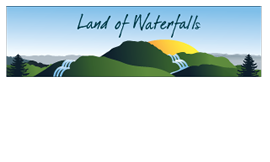When
the wealthy Charleston area plantation owners and their families began spending
summers in the mountains of western North Carolina they soon began holding
church services. Many of these families
were members of Charleston’s Episcopal community.
The
Rev. James Stuart Hanckel was born into a wealthy Episcopalian family in
Charleston, SC in 1817. His father was an
Episcopal priest at Charleston’s historic St. Paul’s Episcopal Church for 45
years.
The
younger Hanckel, known as Stuart, was ordained as a priest in 1839. He was assistant rector in his father’s
church for many years before serving as rector at another historic Charleston
church.
In
the mid-1850s Hanckel, his wife and their eight children began spending summers
in the North Carolina. In 1856 they
bought land from Francis Johnstone and built Chestnut Hill.
On
June 5, 1856 the first Episcopal service was held in a stable at Francis
Johnstone’s Montclove farm. The building
was used to store equipment during the week but cleared out and cleaned on
Saturday evening for Sunday services. Hanckel
officiated at this first service.
Plans
were soon made to build a permanent church.
The group raised funds among themselves, as well as their family and friends
at Flat Rock’s St. John’s-in-the-Wilderness and in Charleston’s Episcopal
community. Johnstone sold them twelve
acres for 10¢ for a church and cemetery to be named St.-Paul’s-in-the-Valley.
The church was officially consecrated on April 28, 1860. Services were held during the summer months,
May through October. Hanckel was missioner
for 12 years.
The Hankels lived in Transylvania County throughout the Civil
War. In addition to serving
St.-Paul’s-in-the-Valley, J. Stuart Hanckel also preached at Methodist,
Presbyterian and Baptist services in Transylvania and Henderson counties during
the war years.
The Civil War brought unrest to Transylvania County and was
particularly hard on these Charleston plantation owners. Some lost everything and never returned to
the mountains, others settled in Brevard when they did come back following the
war. Membership at
St.-Paul’s-in-the-Valley shrank and evidently the few remaining members
relocated to Brevard and re-established the church as St. Philip’s Episcopal
Church.
 In 2008 St. Philip’s Episcopal Church loaned the library two early
In 2008 St. Philip’s Episcopal Church loaned the library two early
ledgers for the purpose of scanning and preserving them. The first book contains records from
St.-Paul’s-in-the-Valley. These records
are mainly from 1856-1863 and include a
baptisms, confirmations, marriages and burials.
Baptism records date through 1879.
The second book is the original St. Philip’s Parish Register. These records begin in 1879 and continue
through the mid-1940s. An extensive
index is also included.
Information in these records varies according to type of record. Included are the date of the event, name,
age, residence, place of birth, parents’ name and residence, cause of death,
place of burial, sponsors or witnesses and attending clergy. All of this information is invaluable to
family researchers.
Photographs and information for this column are provided by the
Rowell Bosse North Carolina Room, Transylvania County Library. Visit the NC Room during regular library
hours (Monday-Friday) to learn more about our history and see additional
photographs. For more information,
comments or suggestions contact Marcy at [email protected] or
828-884-3151 X242.
Photographs: Top–There are no known photographs of St-Paul’s-in-the-Valley Episcopal
Church. This photo, courtesy of Ed Comer, shows the sign at the cemetery.
Bottom–St. Philip’s Episcopal
Church consecrated, October 22, 1891, burned December 25, 1925.




